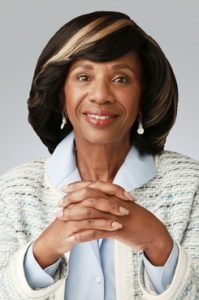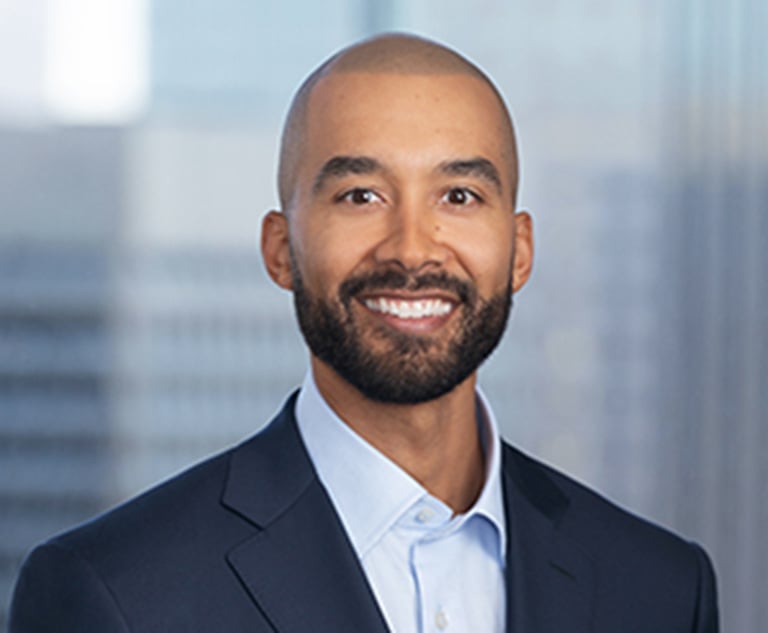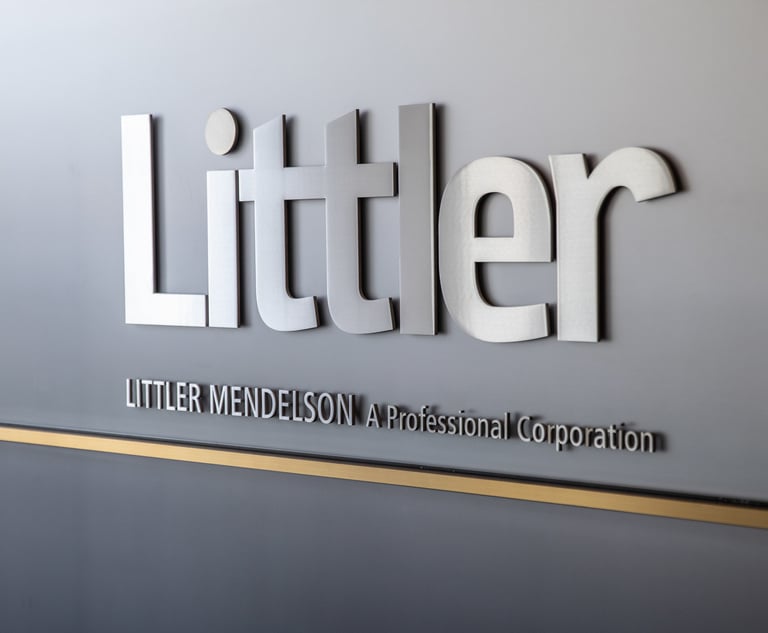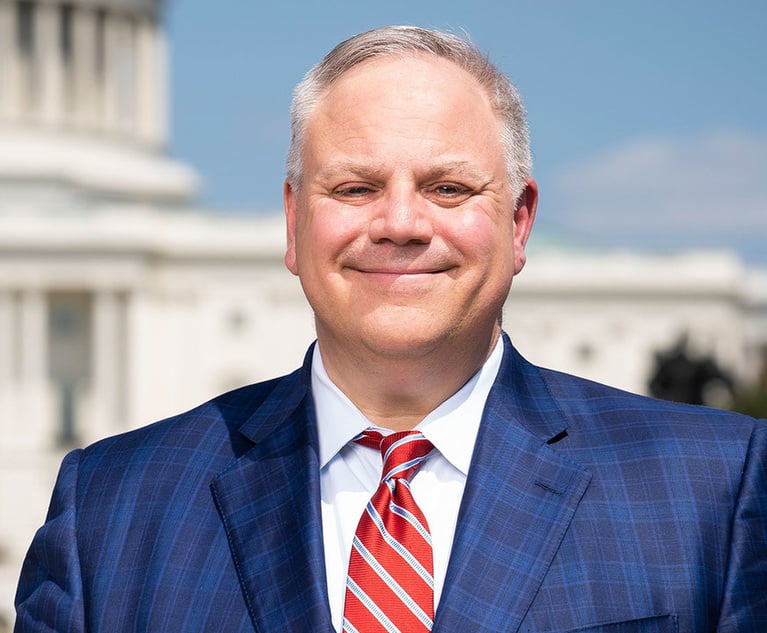'We Have to Act Courageously': A Conversation With Law Firm Chief Diversity Executives
Five chief diversity officers share their thoughts on diversity in the legal profession and comment on such issues as the diversity prop lawsuit and the effect a recession is likely to have on diversity in law firms.
August 07, 2019 at 06:16 PM
7 minute read
 KatyaRusha/Shutterstock.com
KatyaRusha/Shutterstock.com
Law firms are increasingly putting chief diversity officers in their C-Suites, as the din of clients calling for their outside counsel to improve diversity among their ranks has grown.
The American Lawyer spoke to five law firm diversity executives—Fenimore Fisher of DLA Piper, Yusuf Zakir of Holland & Knight, Lloyd Freeman of Archer, Paulette Brown of Locke Lord and Kori Carew of Seyfarth Shaw—asking them about the current events and diversity-related trends they are seeing.
Their answers have been edited for length and clarity.
What makes a good chief diversity officer?
 Paulette Brown
Paulette BrownBrown: I will tell you that one of the reasons why I did not give up my partner status and my clients is because I believe you can be more effective when you contribute to the bottom line … I think that a chief diversity inclusion officer can be most effective when they have the ear of the head of the firm.
Carew: One thing that is essential is to have courage. There are a lot of things we haven’t done in the profession that we could have tried. There are ways in which we could have pushed harder. But we have a fear of failure, and we have a risk aversion that makes us want to prove with certainty that anything we do will work before we do it. It takes courage for a chief diversity officer to be able to put those things on the table in a way that is clear, direct and unapologetic and push for change and accountability.
Fisher: I think that in this role you have to be someone who applies a focus on tenacity, courage and strategic insight—aligning your strategy for diversity, equity and inclusion with the organization’s operational or business model. In order for you to be viewed with a sense of authenticity, you have to be viewed as somebody who is an advocate, even if it’s challenging at times. Lastly, you have to apply a sense of innovation to this work.
What is “diverse” to you? Is there a specific metric or number in mind?
 Fenimore Fisher
Fenimore FisherFisher: I think there’s a lot of generalization concerning parity with the general population, as opposed to a review and assessment of the readily available talent pool and future pipeline. What you always want to focus on is whether your hiring rates and ultimate placement rates are comparable to the rate in which people are applying for positions. I think you also want to focus on looking at the rates of whether women and diverse individuals that are being hired are being retained at comparable rates.
Zakir: There is no specific number or metric that we have in mind. We do aim to be reflective of society as a whole. We are a better institution and we can better serve our clients when we more accurately reflect the world around us. At the end of the day, lawyers solve problems, and those problems come in all different shapes and sizes; They’re experienced by people of all different backgrounds. So, what better way to provide the best counsel than to be able to see those problems from different angles.
Brown: I think that the end goal for me is to have a place where diverse people will want to come to work and where they will feel welcome and where diversity and inclusion is fully a part of the fabric and culture of the firm. Everybody looking from the outside into our firm will know that.
Did Michelle Fang’s call to action for diversity, signed by more than 200 general counsel, leave an impression on you? Did it change the way you approached diversity?
 Lloyd Freeman
Lloyd FreemanFreeman: It did. I’ve always had the mindset that the best way for us to make considerable leaps in diversifying the profession is going to be driven by our clients. If you have clients that tell you, ‘diversity is important to us as a company, and if you don’t fall in line and share in that belief then we can’t do business with you,’ that’s powerful. It’s going to get people who were not already attuned to having diversity be the focus behind some decisions to now listening to mandates from the client.
Zakir: Often, law firms tend to analyze and think about a proposal in a vacuum and stall on execution until absolutely every detail is pinned down. But we need to be more unafraid in generating and testing ideas and continue to evolve those ideas based on their success and failure. Law firms are generally not prone to operate in this way: We are risk-averse institutions filled with risk-averse lawyers. But if there’s anything to take away from Michelle’s letter, it is that the patience for change is short so we have to act courageously.
In light of the “diversity prop” lawsuit filed by a black woman attorney in North Carolina, how can you ensure that your firm’s efforts in diversity are sincere?
Freeman: Well, in order to be sincere about diversity, you have to do more than throw money at this issue. Writing a check does not solve the problem of a lack of diversity in the legal profession. You need to expend human capital. You need people who are going to give their time to develop diverse talent.
 Kori Carew
Kori CarewCarew: We all understand that part of what we do in diversity and inclusion is to test a vision and work toward that vision. So there may be some things that we say that are aspirational. There may be some things that we are working on and maybe we’re 20% of the way, 30% of the way, 50% of the way there. Just because we haven’t achieved 100% doesn’t mean we’re not sincere. But you have to consistently show concerted effort, consistent effort and well-meaning effort.
If and when the economy drops back into recession as many economists are predicting, do you worry that diversity gains will be hit hard?
 Yusuf Zakir
Yusuf ZakirZakir: What’s different today from 10 years ago is that we’re at the point where we’ve built structures and infrastructure. No matter the financial climate, I would envision that we’re going to make progress on this. I think our progress comes in part by steadying our trajectories on this path toward diversity and inclusion, which I would say probably wasn’t as steadfast 10 years ago.
Carew: The short answer is yes. I am always concerned that diversity will be put at second, third or fourth place, or even removed from the agenda. And all of that is dependent on where an organization is on adapting diversity and inclusion as a core value … If an organization is at a place where they understand that diversity is about excellence, about being competitive, and about client service, the economy doesn’t change that.
Brown: Since 2008, when we were hit by the previous recession, people of color have never recovered.
This content has been archived. It is available through our partners, LexisNexis® and Bloomberg Law.
To view this content, please continue to their sites.
Not a Lexis Subscriber?
Subscribe Now
Not a Bloomberg Law Subscriber?
Subscribe Now
NOT FOR REPRINT
© 2025 ALM Global, LLC, All Rights Reserved. Request academic re-use from www.copyright.com. All other uses, submit a request to [email protected]. For more information visit Asset & Logo Licensing.
You Might Like
View All

Three Akin Sports Lawyers Jump to Employment Firm Littler Mendelson

Brownstein Adds Former Interior Secretary, Offering 'Strategic Counsel' During New Trump Term
2 minute read
Trending Stories
Who Got The Work
J. Brugh Lower of Gibbons has entered an appearance for industrial equipment supplier Devco Corporation in a pending trademark infringement lawsuit. The suit, accusing the defendant of selling knock-off Graco products, was filed Dec. 18 in New Jersey District Court by Rivkin Radler on behalf of Graco Inc. and Graco Minnesota. The case, assigned to U.S. District Judge Zahid N. Quraishi, is 3:24-cv-11294, Graco Inc. et al v. Devco Corporation.
Who Got The Work
Rebecca Maller-Stein and Kent A. Yalowitz of Arnold & Porter Kaye Scholer have entered their appearances for Hanaco Venture Capital and its executives, Lior Prosor and David Frankel, in a pending securities lawsuit. The action, filed on Dec. 24 in New York Southern District Court by Zell, Aron & Co. on behalf of Goldeneye Advisors, accuses the defendants of negligently and fraudulently managing the plaintiff's $1 million investment. The case, assigned to U.S. District Judge Vernon S. Broderick, is 1:24-cv-09918, Goldeneye Advisors, LLC v. Hanaco Venture Capital, Ltd. et al.
Who Got The Work
Attorneys from A&O Shearman has stepped in as defense counsel for Toronto-Dominion Bank and other defendants in a pending securities class action. The suit, filed Dec. 11 in New York Southern District Court by Bleichmar Fonti & Auld, accuses the defendants of concealing the bank's 'pervasive' deficiencies in regards to its compliance with the Bank Secrecy Act and the quality of its anti-money laundering controls. The case, assigned to U.S. District Judge Arun Subramanian, is 1:24-cv-09445, Gonzalez v. The Toronto-Dominion Bank et al.
Who Got The Work
Crown Castle International, a Pennsylvania company providing shared communications infrastructure, has turned to Luke D. Wolf of Gordon Rees Scully Mansukhani to fend off a pending breach-of-contract lawsuit. The court action, filed Nov. 25 in Michigan Eastern District Court by Hooper Hathaway PC on behalf of The Town Residences LLC, accuses Crown Castle of failing to transfer approximately $30,000 in utility payments from T-Mobile in breach of a roof-top lease and assignment agreement. The case, assigned to U.S. District Judge Susan K. Declercq, is 2:24-cv-13131, The Town Residences LLC v. T-Mobile US, Inc. et al.
Who Got The Work
Wilfred P. Coronato and Daniel M. Schwartz of McCarter & English have stepped in as defense counsel to Electrolux Home Products Inc. in a pending product liability lawsuit. The court action, filed Nov. 26 in New York Eastern District Court by Poulos Lopiccolo PC and Nagel Rice LLP on behalf of David Stern, alleges that the defendant's refrigerators’ drawers and shelving repeatedly break and fall apart within months after purchase. The case, assigned to U.S. District Judge Joan M. Azrack, is 2:24-cv-08204, Stern v. Electrolux Home Products, Inc.
Featured Firms
Law Offices of Gary Martin Hays & Associates, P.C.
(470) 294-1674
Law Offices of Mark E. Salomone
(857) 444-6468
Smith & Hassler
(713) 739-1250









